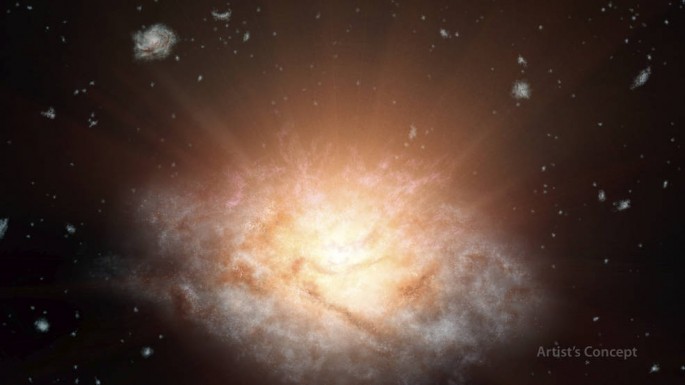Scientists have discovered a very distant yet ultra bright galaxy from 12.5 billion light years away that is considered to be the most luminous galaxy ever known in the universe that apparently contains more than 300 trillion suns.
Researchers believe that the reason why this galaxy shines across the universe is due to a supermassive black hole. These colossal mysterious entities are often found in the center of galaxies where most galactic material becomes reeled in, spiralling into the black hole where it emits enormous amounts of light via ultraviolet and X-ray wavelengths.
If this black hole is causing this massive amount of energy streaming across space, making this galaxy the brightest galactic entity ever, also known as WISE J224607.57-052635.0, scientists are now trying to answer questions as how this supermassive black hole had gotten so colossal in just a short amount of time.
Astronomers are seeing this bright galaxy from 12.5 billion years ago, when the universe was just 1.3 billion years old. Researchers now conclude that this black hole may have simply began to exist as a large entity.
According to lead author of the study, Chao-Wei Tsai of NASA's Jet Propulsion Laboratory, another possible explanation for this black hole to grow so big is when it had recently went through a sustained binge of galactic material, devouring everything faster than what was thought possible. This can also occur when the black hole is not typically spinning fast.
Black holes feed upon the light emitted from superheated galactic material that pushes away all the gas enshrouding the galaxy. When the black hole spins slowly, it only means that there's less galactic material that is being blasted away into space.
According to Andrew Blain from the University of Leicester in the United Kingdom, these supermassive black holes are apparently in the process of devouring more matter that can extend into a longer period of time, probably millions of years.
This super bright galaxy or WISE J224607.57-052635.0 was detected by NASA's Wide-field Infrared Survey Explorer (WISE) spacecraft along with other 19 extremely luminous infrared galaxies or ELIRGS. The powerful light from this galaxy was caused by the ELIRGs' cores heating up the surrounding gas clouds that contains infrared radiation that was detected by WISE.
This study is published in The Astrophysical Journal.



























